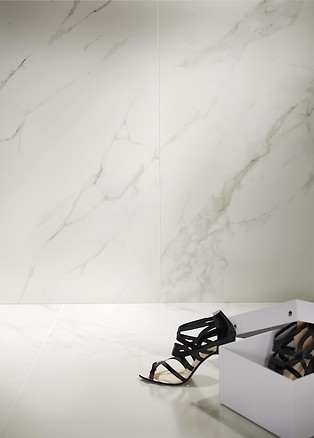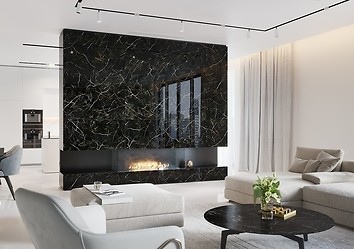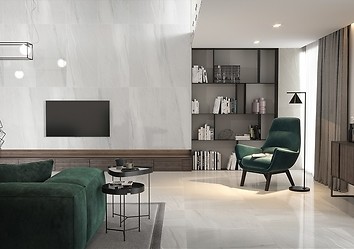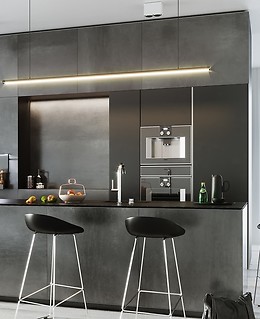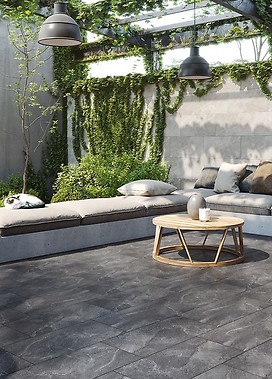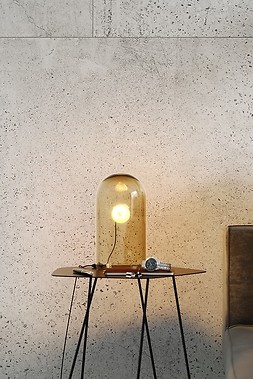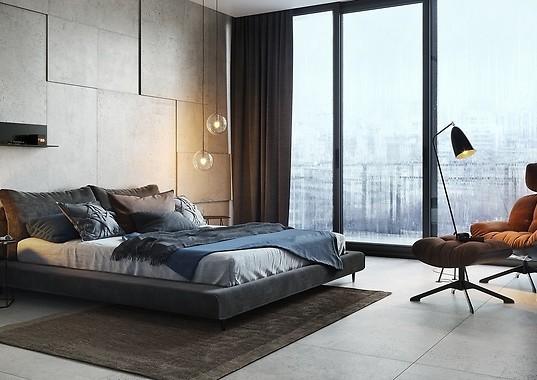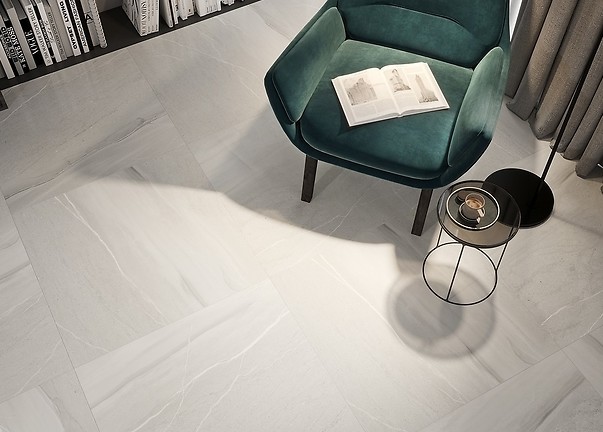
Trends
Stone and concrete: not only for austere interiors
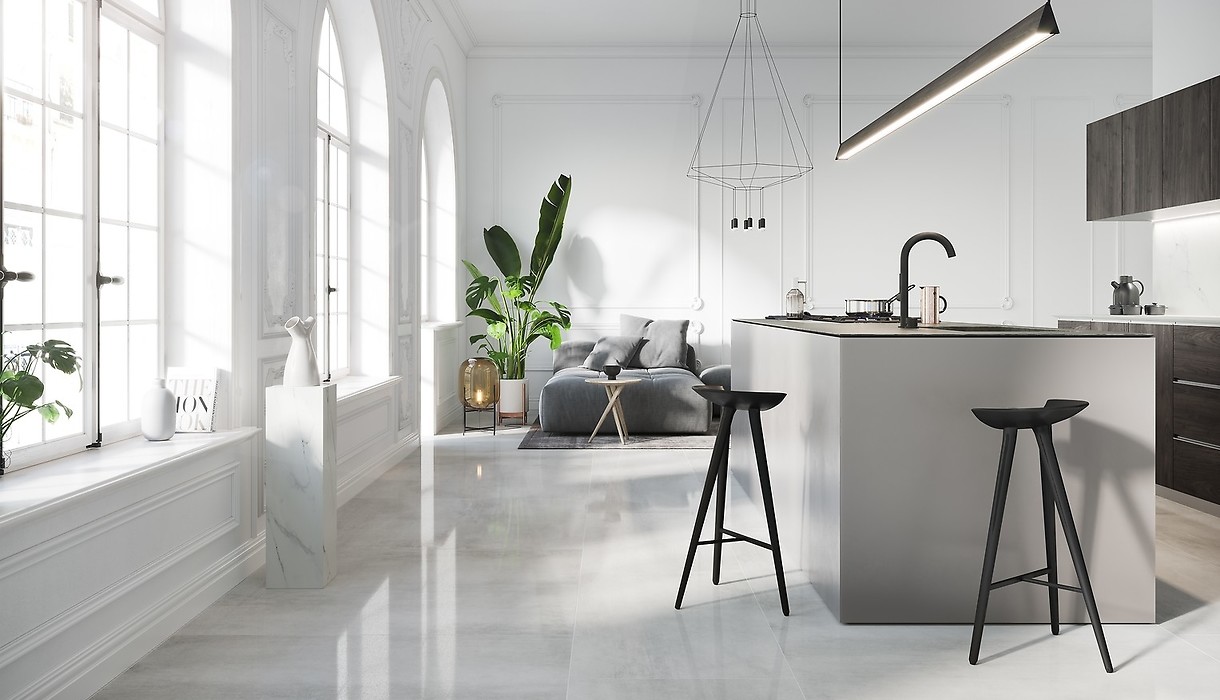
“The patterns of refined stone and raw concrete have dominated the majority of projects from the most renowned designers. These natural materials have become symbols of modernity, being up to date with the latest trends and knowing what is currently ‘in’ when it comes to interior design”, says Iza Gemzała, architect and author of the Prosty Plan (“A Simple Plan”) blog.
Refined stone
Stone is a very refined and elegant finishing material, highly capable of fleshing out a unique ambiance in every indoor setting. The variety of colours, textures and patters of natural stone make it a material of everlasting beauty which can match all tastes and likes. The Opoczno collections of tiles in the GRAND STONE product segment touch upon natural stone in a very unique way which conforms to the principle of ‘creative emulation’. By drawing upon the texture and colour of natural stone, a proposal is made for those who prefer a classic indoor space arrangement style and wish to expose the timeless aesthetics and style therein. While providing great decorative value, stone tiles are perfect for highlighting sections and fields of the interior design you choose. “Marble, synonymous with luxury and refinement, is the king of stone. The unique semi-opaque veining of the material is a popular choice for kitchen worktops, wall cladding of suburban houses, ample and comfortable showering spaces, and relaxing bathing corners in bathrooms. It has also been increasingly popular as large gres tiles, which provide a staggering number of design options, and also when your budget is critical. The multitude of shades in marble patterns helps you let loose the reins of your imagination to build unique compositions, even in small rooms”, Iza Gemzała adds.
Industrial trends, wherever you want them to be
The applications of concrete or stone gres tiles are only limited by your imagination. Why is it so? This material is easy to install and can fit almost any room. And not just on the floor, the walls or the ceiling. The tiles featured in the GRAND CONCRETE and GRAND STONE collections can be used to make a kitchen island that really stands out, or for a bathtub lining, a cladding around the fireplace or to line the whole patio. “If you think that gres tiles are only for bathrooms and kitchens, think again! You might be surprised with the non-standard uses of these products.
Gres tiles can be used for a unique and appealing kitchen range front. Gres tiles are extremely strong, durable, and resist impact, scratching and heat. They can provide your kitchen with a unique design theme to make the room unlike in any other home. Gres tiles are also great for countertops in the bathroom. If you want a countertop washbasin in a unique form, a gres tile top can make for a great background here. Gres tiles are water resistant, so there is no fear of splashing water onto it. Pick gres tiles in large sizes to minimise the number of joins and pointing. A large countertop made from gres tiles looks very natural in a bathroom setting”, Iza Gemzała explains.
Design by details
When thinking about industrial indoor designs, most people associate them with austere refinement, cold appearance, and very sparse additions. The typical industrial features are red brickwork, concrete with a texture of impressed shutterwork, glass, copper, metal details, and an overall minimalism. It is common to look for solutions that add some warmth and coziness to these settings. What details and additions should you add to a room with stone or concrete surfaces? Post-industrial loft-like spaces can be perfectly invigorated with live colours, striking patterns and designs, and objects or materials related to nature. The green tones of plants and wooden accessories harmonise well with industrial severity throughout your home.
“Textiles are materials worthy of attention. This year’s noticeable trend is shiny, glossy and gleaming velour materials for lounge furniture, including chairs and beds. Keep this in mind when designing an industrial-themed space; its austere components go very well with soft, cozy textiles. Light is another important addition for industrial indoor design, although it is less obvious. No indoor space can be built or decorated without illumination. This is so true at our latitudes, where for most of the year, people suffer from insufficient exposure to sunlight, and have to resort to artificial lighting. Energy-efficient LED lamps are increasingly popular, especially as they can be controlled with mobile apps and radiate natural colour temperatures depending on the time of day. The latter feature is very beneficial to human health. With LED lamps at home, even the biggest sleepyheads can get up easily in the morning and full of energy for the day, and reading books in the evening does not strain the eyes in LED light. With the right light sources and fixtures, industrial interiors finished with slabs of concrete or stone have a unique magic and depth of colour. When planning a decorative wall made from those refined materials, remember to provide it with a smart lighting design.”

